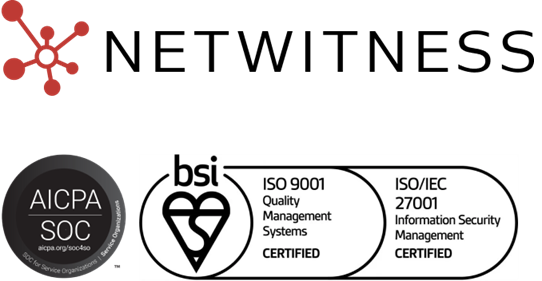What are UEBA tools?
UEBA tools (User and Entity Behavior Analytics) are advanced security platforms that use machine learning and statistical analysis to detect anomalous activities by monitoring and analyzing patterns of user behavior and entity interactions within organizational networks. These systems establish behavioral baselines for users, devices, applications, and other entities, then identify deviations that may indicate security threats such as compromised accounts, insider threats, or advanced persistent attacks. Understanding user behavior analytics and implementing robust ueba security tools enables organizations to detect sophisticated threats that traditional rule-based security controls often miss.
UEBA (User and Entity Behavior Analytics) involves collecting and analyzing data about how users and entities interact with systems, applications, and data to identify patterns that deviate from normal behavior. Unlike traditional security tools that rely on signatures or predefined rules, user and entity behavior analytics uses machine learning algorithms to understand typical behavior patterns and flag anomalies that could indicate security incidents.
Modern UEBA security tools monitor multiple data sources including authentication logs, network traffic, file access patterns, and application usage to build comprehensive behavioral profiles. These best UEBA tools can detect threats like account compromise, data exfiltration, privilege abuse, and lateral movement by identifying activities that fall outside established behavioral norms.
Synonyms
- UEBA Solutions
- Behavioral Analytics
- Security Analytics
- Network Security Analytics
Why UEBA Tools Matter
Failing to implement user behavior analytics can result in undetected insider threats, compromised accounts operating unnoticed, and sophisticated attacks that bypass traditional security controls.
Key reasons UEBA security tools are critical include:
- Advanced Threat Detection: Identifying sophisticated attacks that use legitimate credentials and avoid triggering traditional signature-based security alerts.
- Insider Threat Identification: Detecting malicious or negligent insider activities by recognizing unusual patterns in data access and system usage.
- Compromised Account Discovery: Identifying when legitimate accounts are controlled by attackers through behavioral anomalies that differ from normal user patterns.
- Reduced False Positives: Using machine learning to understand context and reduce alert fatigue compared to rule-based security systems.
Effectively implementing network behavior analysis tools ensures organizations can detect threats that operate within legitimate access pathways and might otherwise remain undetected for extended periods.
How UEBA Tools Work
User and entity behavior analytics platforms typically follow a structured analytical process:
- Data Collection: Aggregating information from multiple sources including SIEM systems, authentication logs, network traffic, endpoint activities, and cloud platforms.
- Baseline Development: Using machine learning algorithms to establish normal behavioral patterns for each user and entity across various contexts and timeframes.
- Anomaly Detection: Continuously comparing current activities against established baselines to identify statistically significant deviations from normal behavior.
- Risk Scoring: Assigning risk scores to detected anomalies based on severity, context, and potential security impact of the unusual behavior.
- Alert Generation: Notifying security teams about high-risk anomalies that require investigation, with contextual information to support rapid response.
Types of UEBA Use Cases
1. Compromised Credentials:
Detecting when attackers use stolen credentials by identifying login patterns, access locations, and activities inconsistent with legitimate user behavior.
2. Insider Threat Detection:
Identifying employees or contractors accessing sensitive data outside their normal patterns or downloading unusual volumes of information.
3. Lateral Movement:
Recognizing when attackers move between systems using techniques that differ from typical administrative or user behavior patterns.
4. Data Exfiltration:
Detecting unusual data transfers, file access patterns, or use of unapproved channels for moving information outside the organization.
Best Practices for UEBA Implementation
- Integrate Multiple Data Sources: Connect best UEBA tools with SIEM, identity systems, network monitoring, and endpoint platforms for comprehensive behavioral visibility.
- Allow Adequate Baseline Periods: Give network behavior analysis tools sufficient time to learn normal patterns before relying on anomaly detection capabilities.
- Tune for Your Environment: Customize sensitivity settings and risk scoring models to match organizational workflows and reduce false positives.
- Combine with Threat Intelligence: Enhance network threat behavior analysis by correlating behavioral anomalies with external threat intelligence feeds.
- Establish Response Workflows: Create clear procedures for investigating and responding to behavioral anomalies flagged by UEBA security tools.
Related Terms & Synonyms
- UEBA: User and Entity Behavior Analytics, the discipline of using machine learning to detect security threats through behavioral analysis.
- User and Entity Behavior Analytics: Full term for UEBA, emphasizing the analysis of both human users and non-human entities like systems and applications.
- User Behavior Analytics: Focused application of behavioral analysis specifically to human user activities and patterns.
- Network Behavior Analysis Tools: Platforms that analyze network traffic patterns and communications to identify anomalous activities and potential threats.
- Network Threat Behavior Analysis: Specialized application of behavioral analytics focused on detecting threat activities within network environments.
- UEBA Security Tools: Comprehensive platforms that combine behavioral analytics with security monitoring and response capabilities.
People Also Ask
1. What is UEBA?
UEBA (User and Entity Behavior Analytics) is a cybersecurity technology that uses machine learning and statistical analysis to establish behavioral baselines for users and entities, then detects anomalies that may indicate security threats like compromised accounts, insider threats, or advanced attacks.
2. What is user behavior analytics?
User behavior analytics is the practice of monitoring and analyzing how users interact with systems, applications, and data to identify patterns and detect anomalous activities that could indicate security incidents, policy violations, or operational issues.
3. What is UEBA in cyber security?
UEBA in cyber security refers to advanced analytics platforms that detect sophisticated threats by identifying behavioral anomalies rather than relying on signatures or rules, enabling detection of insider threats, compromised credentials, and attacks that use legitimate access pathways.



